Developer millions to Greenwich: Changes coming but sufficient given borough last in London?
In recent weeks this site has covered developer income owed to Greenwich Council and how the authority are potentially missing out on tens of millions of pounds.
The council are currently bottom in London for collecting money from the Community Infrastructure Levy – despite being near the top for new homes, shops and hotels.
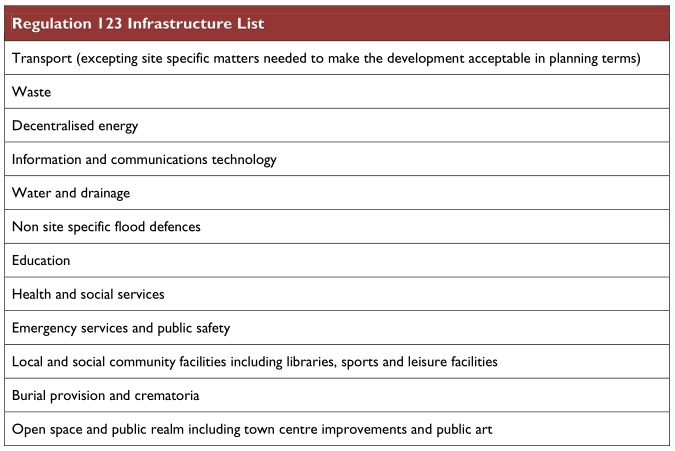
Greenwich were not only last in the most recent annual figures, but over the past five years have trailed many London boroughs by tens of millions.
Now a Greenwich scrutiny panel meeting will look into the issue tonight (Monday 20 September).
A report states “Additional resources (2.5 FTE officers) have been secured within the team to help deal with the volume of applications and to increase the capacity for monitoring and enforcing collection”.
In addition “a recent review of live CIL applications (i.e. those that had received a Liability Notice but are yet to submit a Commencement Notice) identified 47 sites where there was evidence of works having commenced (potentially £1.8m in CIL receipts).”
The additional staffing will now seek to undertake:
- The migration of the Councils planning obligation data from an Excel-based monitoring system into a bespoke system (Exacom), providing improved monitoring and reporting of S106.
- Regular development monitoring based on quarterly checks of Council records (Council Tax, Street Naming and Numbering, Building Control) and Google Maps for evidence of commencement.
- Review of all development that has been granted CIL relief to ensure that no disqualifying events have occurred within the 7-year claw back period. In the event that a disqualifying event has occurred, the borough can remove the relief and seek to recover the CIL owed.
An appendix to the report lists comparative numbers for all London boroughs – but does not include all comparative numbers so it appears councillors will not get the full picture at tonight’s meeting. More on that below.
The report states Greenwich were second lowest in London for Borough CIL in 2019/20, while TfL state they were last. Who to believe? Well, Greenwich also claim for example that Lewisham obtained less from CIL over the period 2015/16 to 2019/20, yet Lewisham’s own report claims they received more:
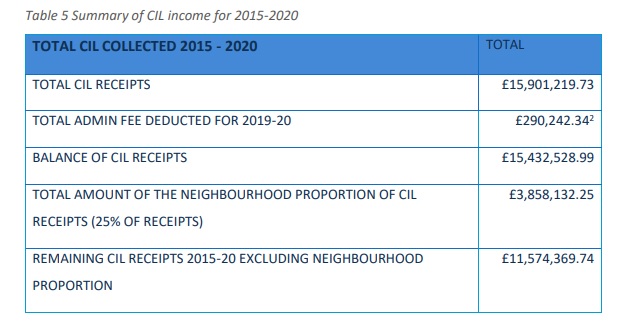
Lewisham received £15.9 million in Borough CIL from 2015/16 to 2019/20. However in Greenwich’s report before councillors tonight they claim they received £8.4 million and put themselves above Lewisham: “For the analysis period (April 2015 to March 2020) the Royal Borough collected just over £8.4m”.
Somehow that translates into Greenwich being above Lewisham in an accompanying chart. This is wrong:
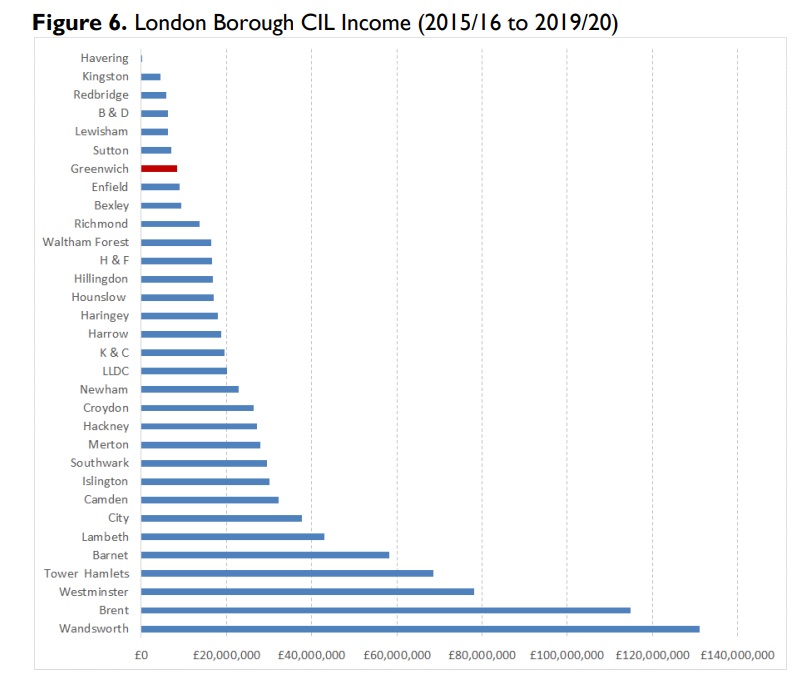
It isn’t the first time Greenwich councillors are being presented with inaccurate data in council reports.
What is the CIL?
Firstly, a quick recap of what the Community Infrastructure Levy actually is. The Community Infrastructure Levy was introduced in 2015 and sees developers pay a set amount per square metre to a local authority. In Greenwich it’s set at this amount, which they’ve never adjusted (eg for inflation) as other boroughs have:
With some authorities obtaining tens of millions per year, it’s a key resource to fund services.
Zero income from car parks further highlights just how mistaken it was, and is, to encourage and approve large retail sheds with extensive car parks in areas such as Charlton and Greenwich when mixed-use is not only more sustainable but brings in additional income.
Payments from developers can be reduced if housing within a development if “affordable” or a building is for charitable purposes.
Bexley along with some other boroughs have a £10 fee for “other uses” which can cover myriad development. Greenwich put this at £0.
That’s low hanging fruit to increase income not being utilised.
In Greenwich, half of all income is allocated to Woolwich Crossrail station. This puts Greenwich at a disadvantage, though a major issue is so little is being collected from developers even before it’s allocated.
It now looks a lack of collection will ensure a 2022/23 target to pay off the Crossrail stations will be missed.
The level is set by a Planning Inspector-led Examination, though given rates in many other London boroughs Greenwich certainly have scope to vary without any impact upon development.
Some boroughs have revised totals since 2015. Greenwich have not and state they will later this year.
In 2019 the Mayoral element of CIL was reduced for Greenwich by £10 allowing the borough to increase their share by £10 with no impact upon developers. They did not do so.
Process
Once a planning application is approved, a developer should issue a Commencement Notice with an authority in turn issuing a Demand Notice for payment.
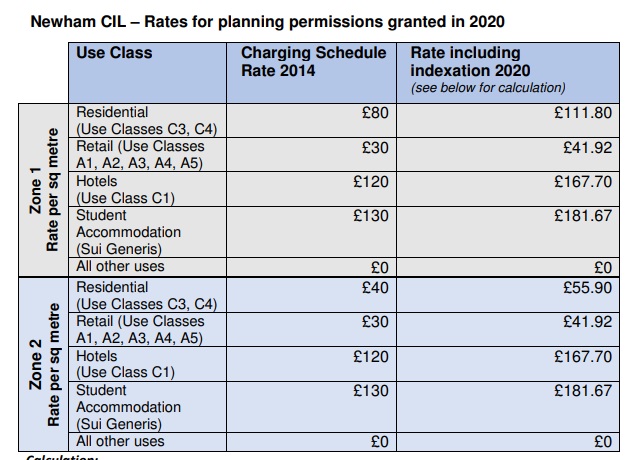
It appears this hasn’t been happening as regularly as it should have in the borough.
The report has the whiff of playing the blame game for why Greenwich is last in London, with developers at the receiving end (why other boroughs have managed to gain more income isn’t stated) alongside stating developments such as Kidbrooke Village were outline approved before CIL was introduced.
The council report highlights Kidbrooke Village as being one development approved before 2015, yet a council report obtained by Freedom of Information and not before councillors tonight shows some payments via CIL from Phase 2 of Kidbrooke Village.
Low amounts
A full list of payments seen by this site appears to see some large developments recently constructed absent, even accounting for “affordable” housing discounts.
Connaught estate rebuild phase 1 for example, is not on there.
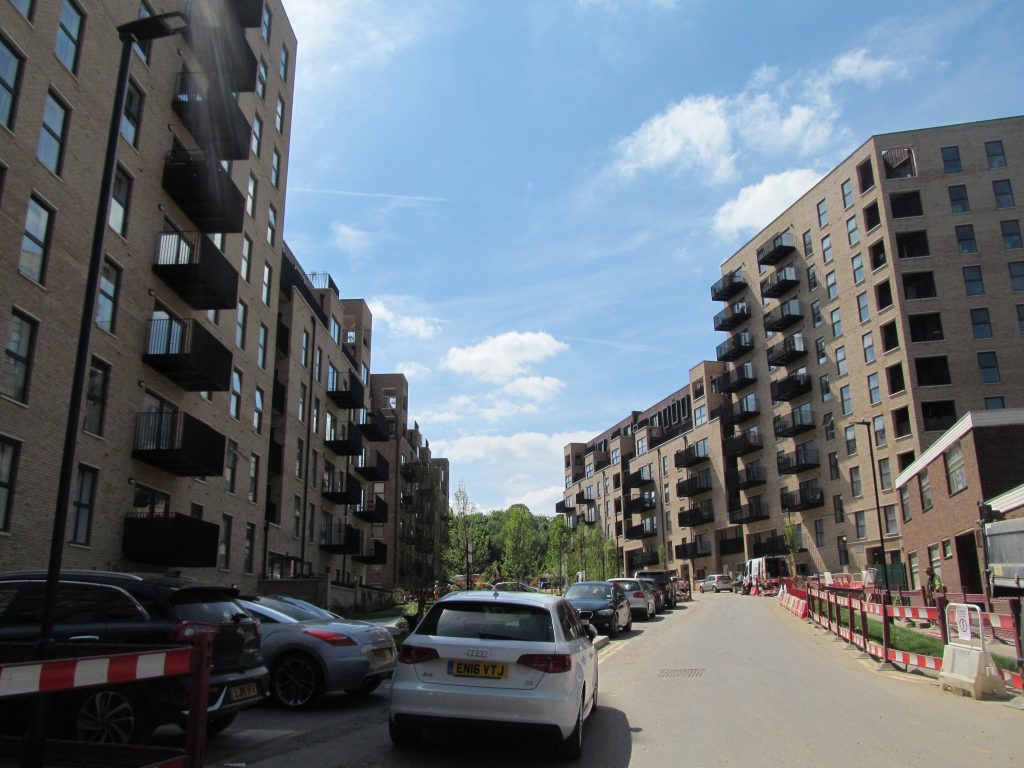
Other large sites not featured including:
Heart of Greenwich – Greenwich Square Phase 1 or 2
Phase 2 was approved subsequent to 2015.
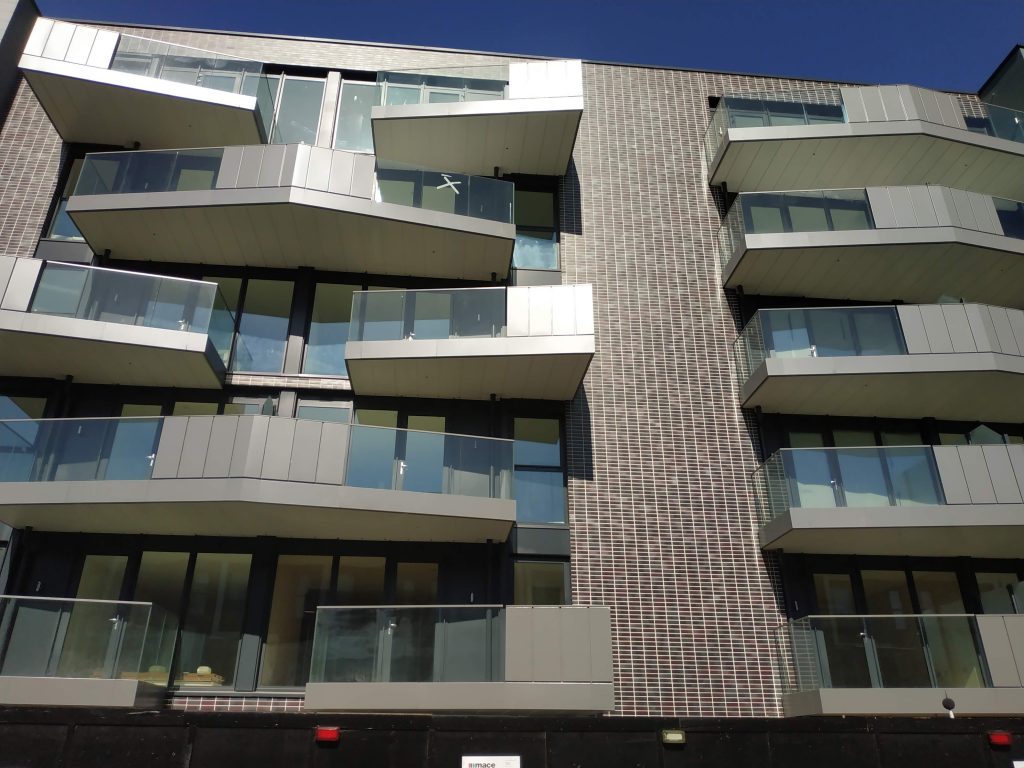
GMV
Later phases of Greenwich Millennium Village have been approved and constructed since 2015.
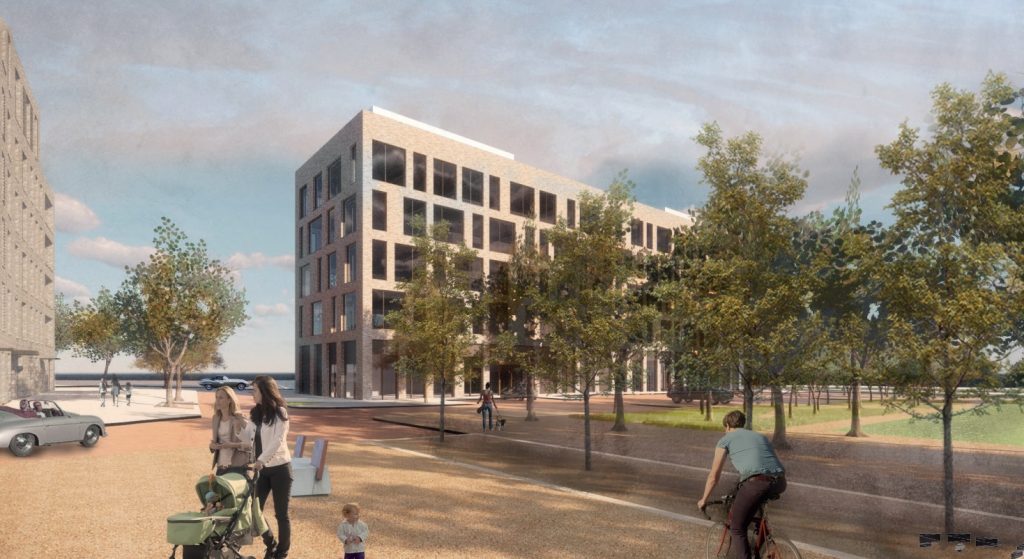
Greenwich Design District
This is now approaching completion.
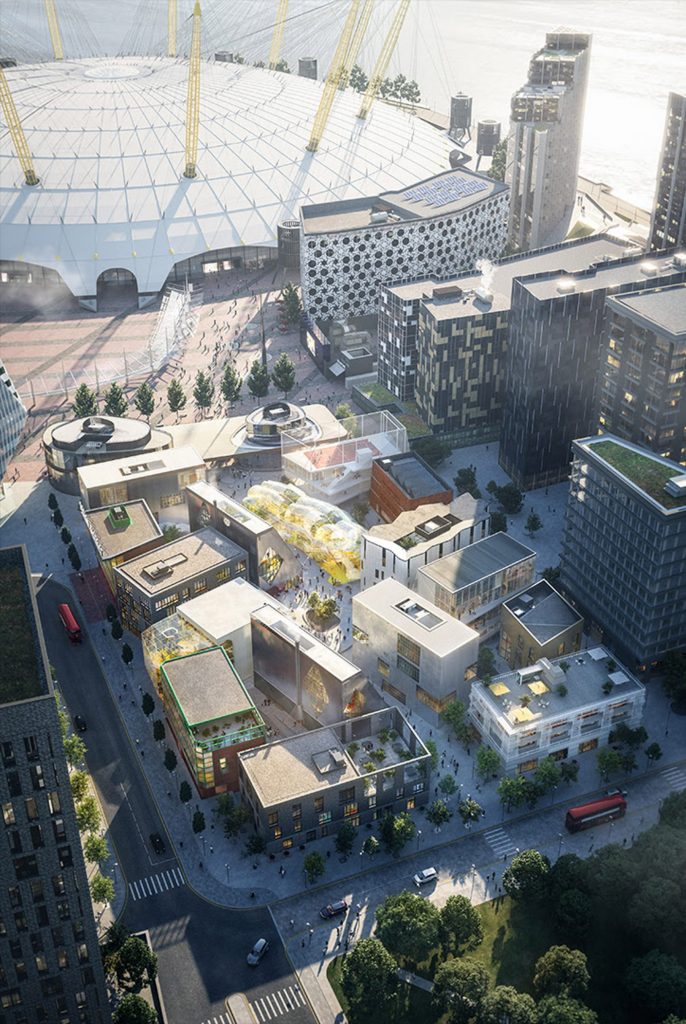
I cannot see it listed. Perhaps Knight Dragon avoid payment given Greenwich have no “other” element of CIL income.
Union Wharf
This was approved in July 2015, after Greenwich’s CIL charging schedule was introduced on 6th April 2015 and adopted on 25th March 2015.
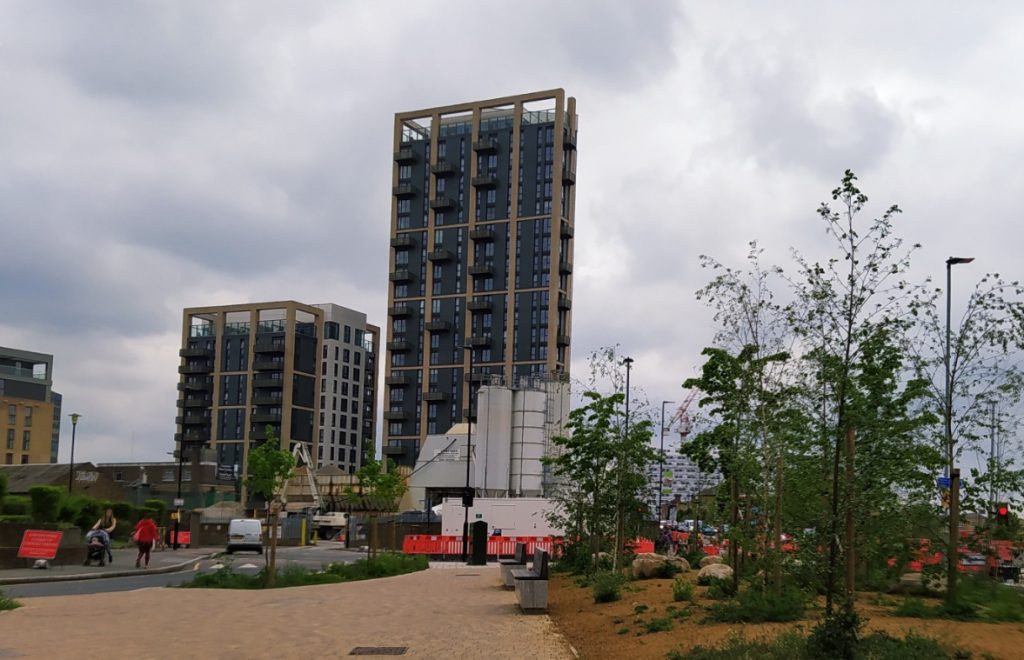
Yet it’s not listed.
Fairview Homes’ Hope Wharf beside Deptford Creek
This site completed in 2019 after approval post-2015.
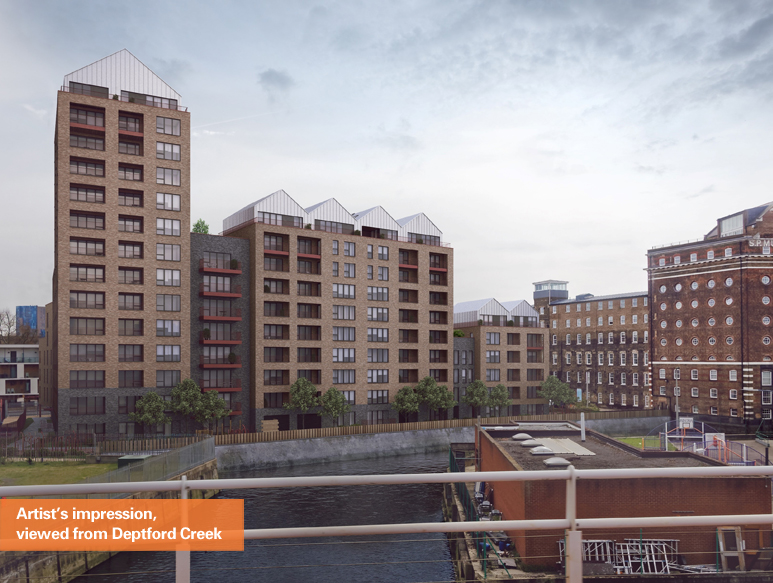
Not on the list. CIL income is often in addition to Section 106. We know this block brought GLLaB £130,130 in S106 but further details are a blank.
Greenwich Alcatel

Callis Yard

A key question is whether authority not sending demand notices for payment?
And if the department is overstretched, why have they not increased total CIL income allocated to administration and staffing from four per cent to the maximum permitted – five per cent. This should pay for itself relatively quickly with millions due.
Connaught Estate Phase 2 and 3 do appear in the income list and payment has been received in June 2021. This seems quite late given payment is often made at the commencement of a project and not the end.
Phases 2 and 3 saw £1,105,128.92 paid to Greenwich Council.
We can compare broadly similar developments in neighbouring boroughs to get a comparison of income. Each borough sets their own rate after agreement from the planning examiner.
If we look at Bexley borough, a development of 518 homes with 22 per cent “affordable” at the former Civic Centre brought the authority £3,426,261 of which £1,713,130.82 has been paid of the latest annual report.
Bexley has a lower rate of CIL at the upper end compared to Greenwich.
One factor in incoming totals is that Greenwich do not list income from commercial space that isn’t a supermarket. Bexley list “all other uses” at £10. Newham require £30 for the same before proposed inflation-related increases. A low enough figure not to dissuade development, but bringing in money on sites with extensive commercial units such as the former civic site?
In Woolwich towers on the former Ogilby site saw 116 homes.
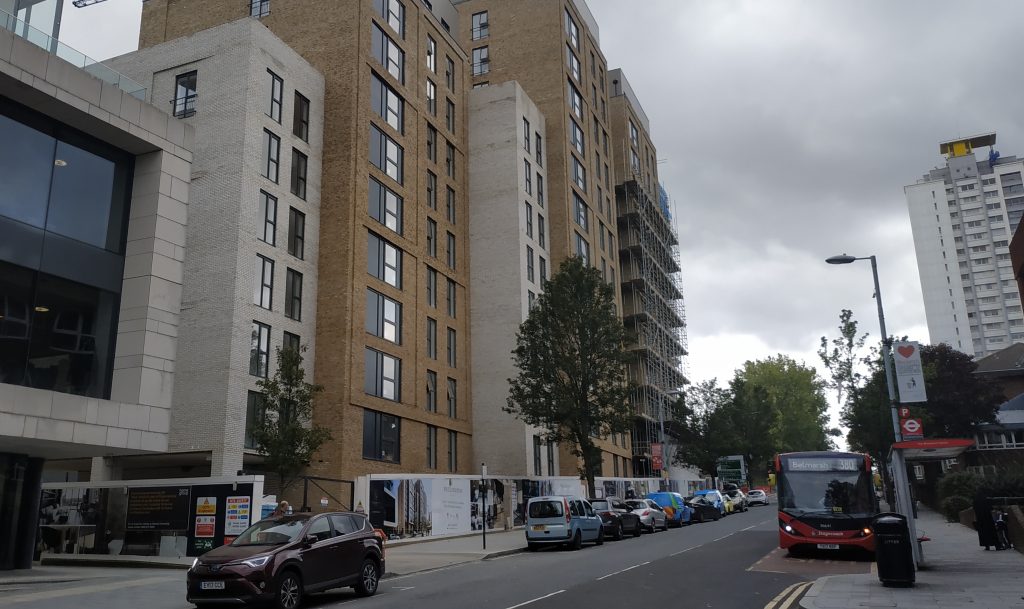
However “affordable” relief seems high over four payments. A relief of £404,785.90 was given for “affordable” housing resulting in a payment of £40,578.94 in October 2019
Also in October 2019 there was a payment of £23,564.90 with £235,066.25 relief.
Other payments were:
£418,635.16 with £390,177.81 relief on 8 March 2018.
£243,108.76 with £226,583.08 relief also on 8 March 2018.
BUILDINGS 10 & 11 AND ROYAL CARRIAGE SQUARE, ROYAL ARSENAL, WOOLWICH, SE18 £297,574
Income not improving areas in need
As often covered on this site pedestrian links across parts of east Greenwich and Greenwich Peninsula are extremely poor given new hotels, attractions and housing.
Aside from the huge developments which should bring in extremely high sums (but apparently havn’t via CIL), some smaller sites have brought in cash:
- 3-5 Tunnel Avenue, Greenwich, SE10 0SL £86,306
- Land West of the O2 (Plot N0301), Greenwich Peninsula, SE10 £82,731
- 2-12 Blackwall Lane, Greenwich, London, SE10 0AN £59,379
Yet it would seem none has gone towards improving the areas to encourage safety and active travel, even though it could with open space and public realm (plus transport) listed:

Bexley do appear to place an emphasis on improving links. They’ve allocated £270,000 in Erith:
“This will seek to address transport and environmental issues to assist the regeneration of the town centre.
Issues identified include; severance for pedestrians and cyclists caused by the strategic road network separation between the local residential areas and the town centre through major roads”
Meeting tonight
There’s many pertinent questions to be asked tonight into why this crucial funding stream has seen so little arrive in council coffers to assist with services borough-wide, and why a report presented to councillors gives a misleading picture on income relative to other boroughs.
Developer income has been a strange issue in Greenwich borough for a long, long time.
Why was so little being spent improving shopping areas, parks, healthcare, transport and much else?
Until it became a legal necessity the authority did not routinely publish information nor discuss it publicly.
In planning meetings they still fail to routinely discuss it as a specific agenda in planning meetings as other boroughs do.
We’ve heard time and time again that Section 106 couldn’t be spent in various areas while other borough’s did so, and Greenwich would then flout their own apparent statements (they stated funding must be spent in immediate vicinity of a development when in reality it can be pooled and spent elsewhere) then suddenly they found £100,000 for the Woolwich large screen.
Now Community Infrastructure Levy mainly replaces S106 and a whole new set of problems emerge.
It’s welcome that the council’s scrutiny panel are looking into it, but let’s just hope it’s not a brush off sessions tonight.
This whole area requires serious reform and analysis by councillors.
Ultimately its schools, health, transport, parks, shops and all towns in the borough feeling the impact.
Running a site alone takes time and a fair bit of money. Adverts are far from enough to cover it and my living costs as a private renter.
You can support me including via Paypal here Another option is via Patreon by clicking here You can also buy me a beer/coffee at Ko-fi here There's also a Facebook page for the site here Many thanks
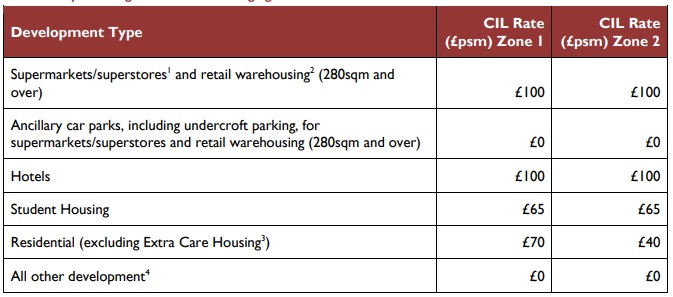
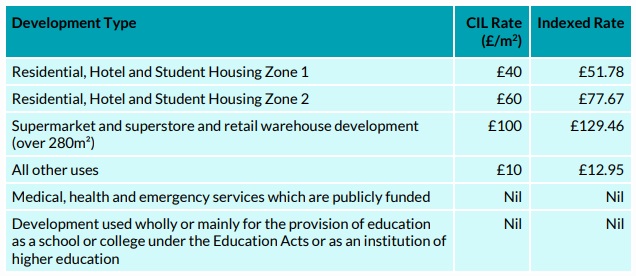

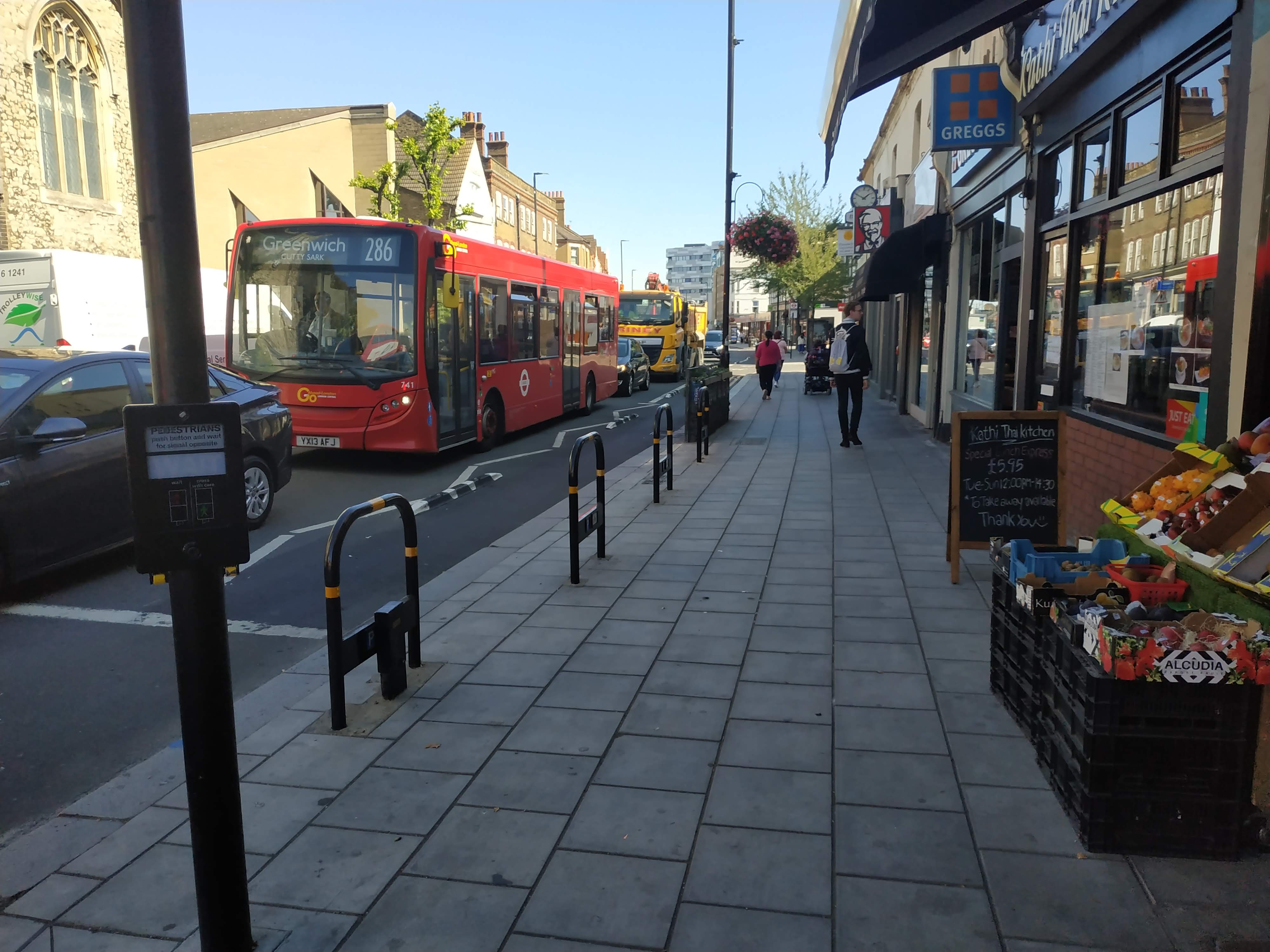
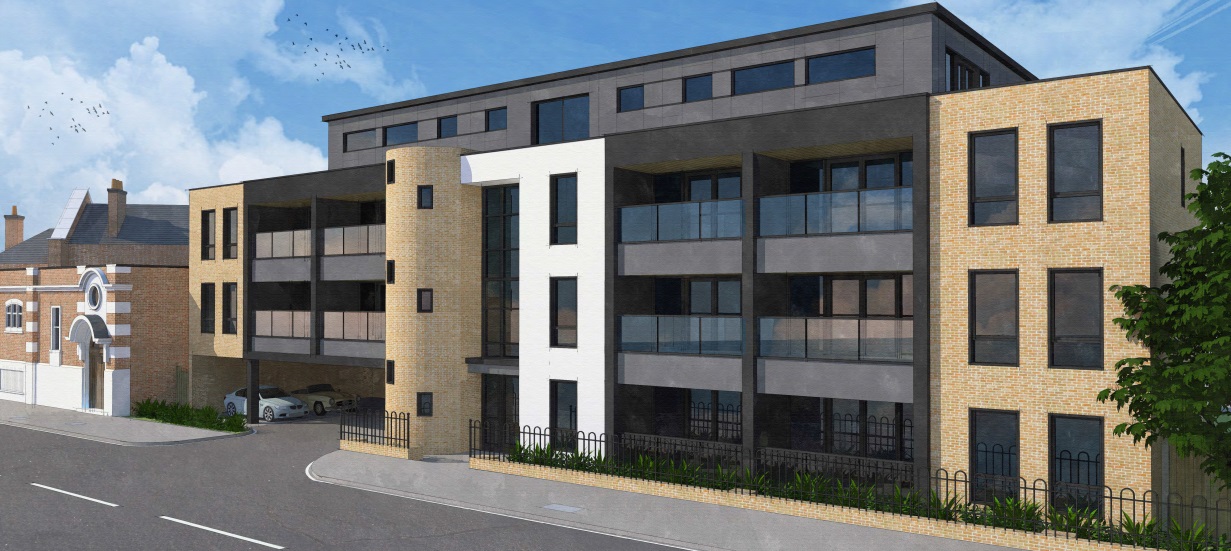
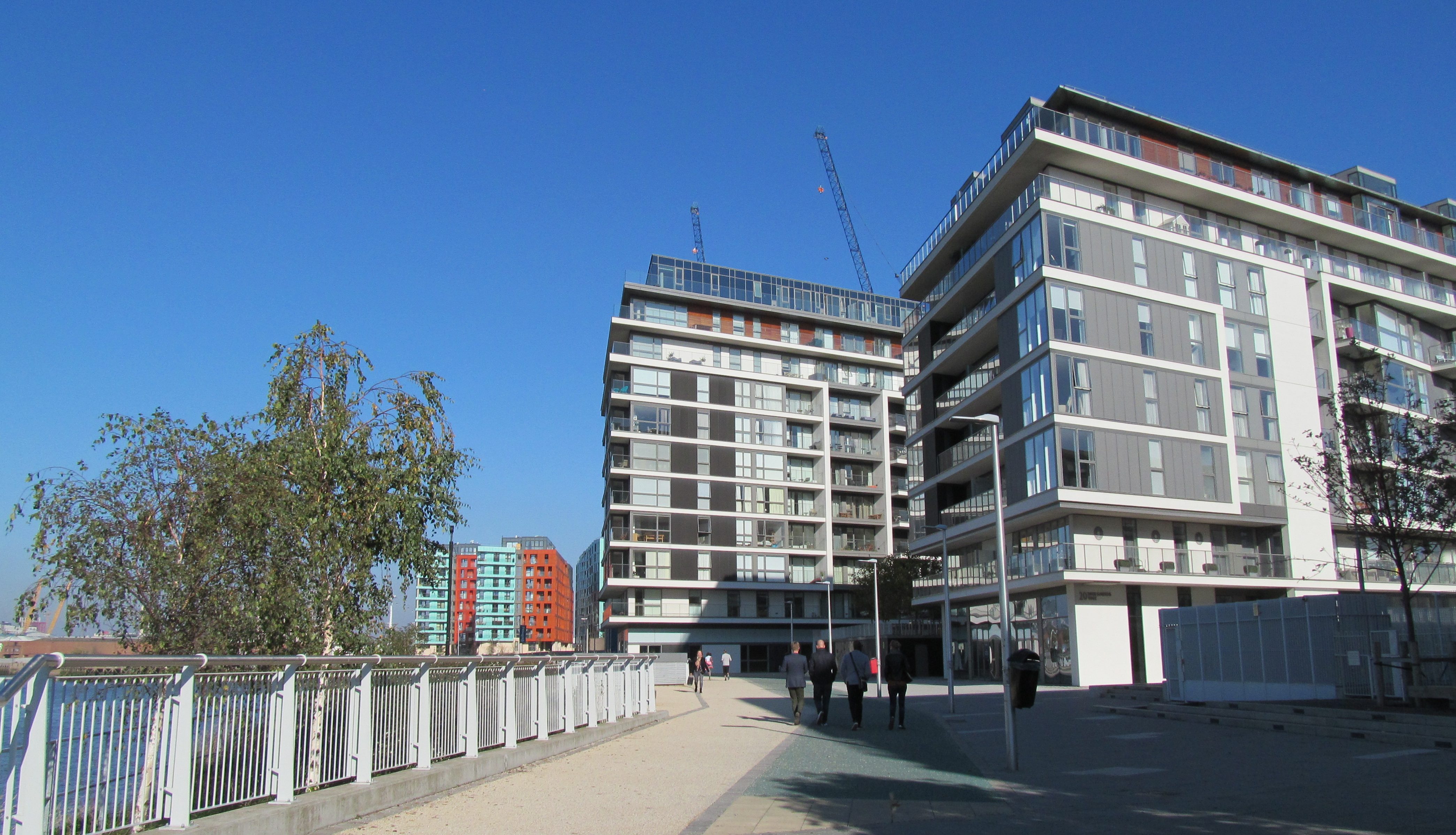
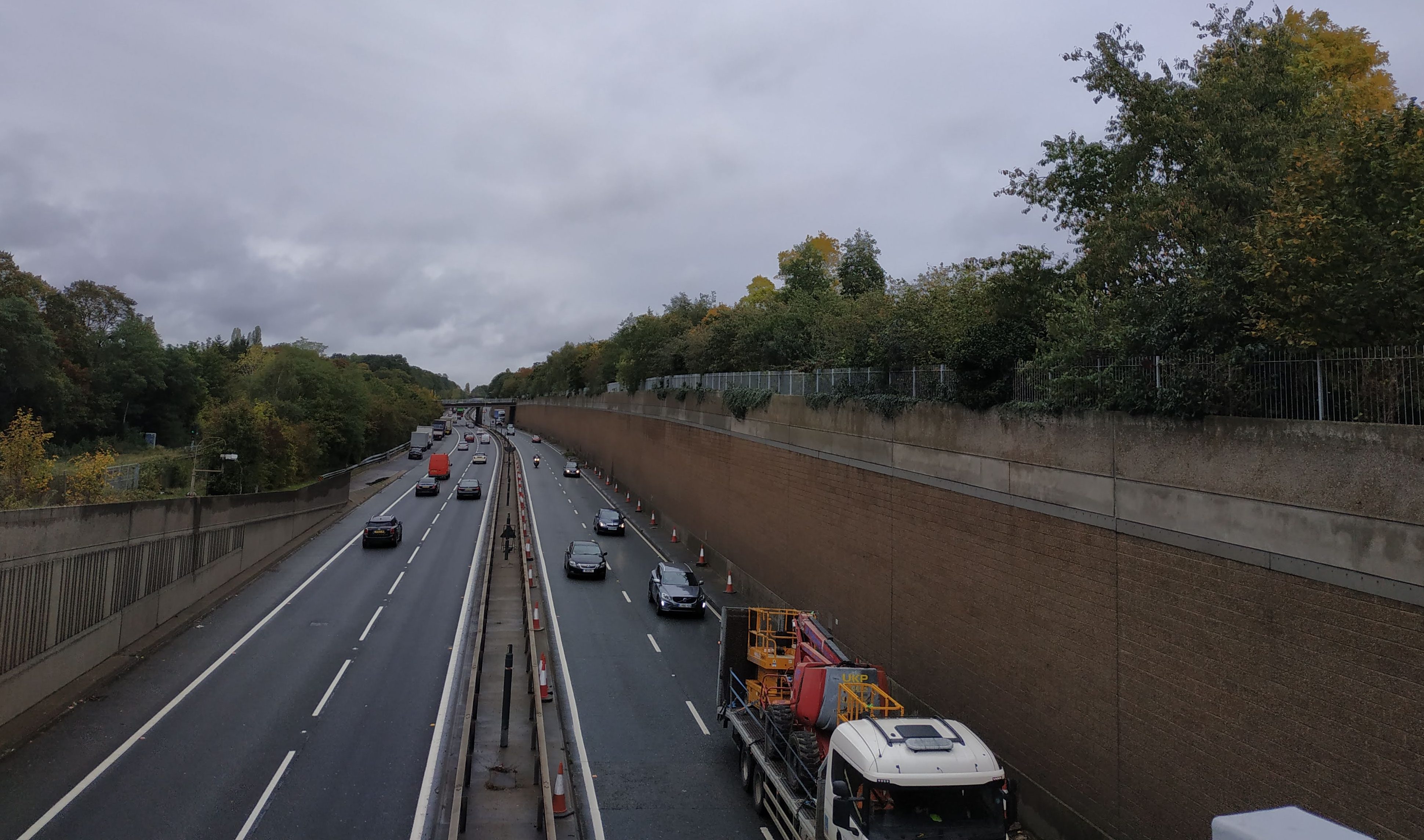
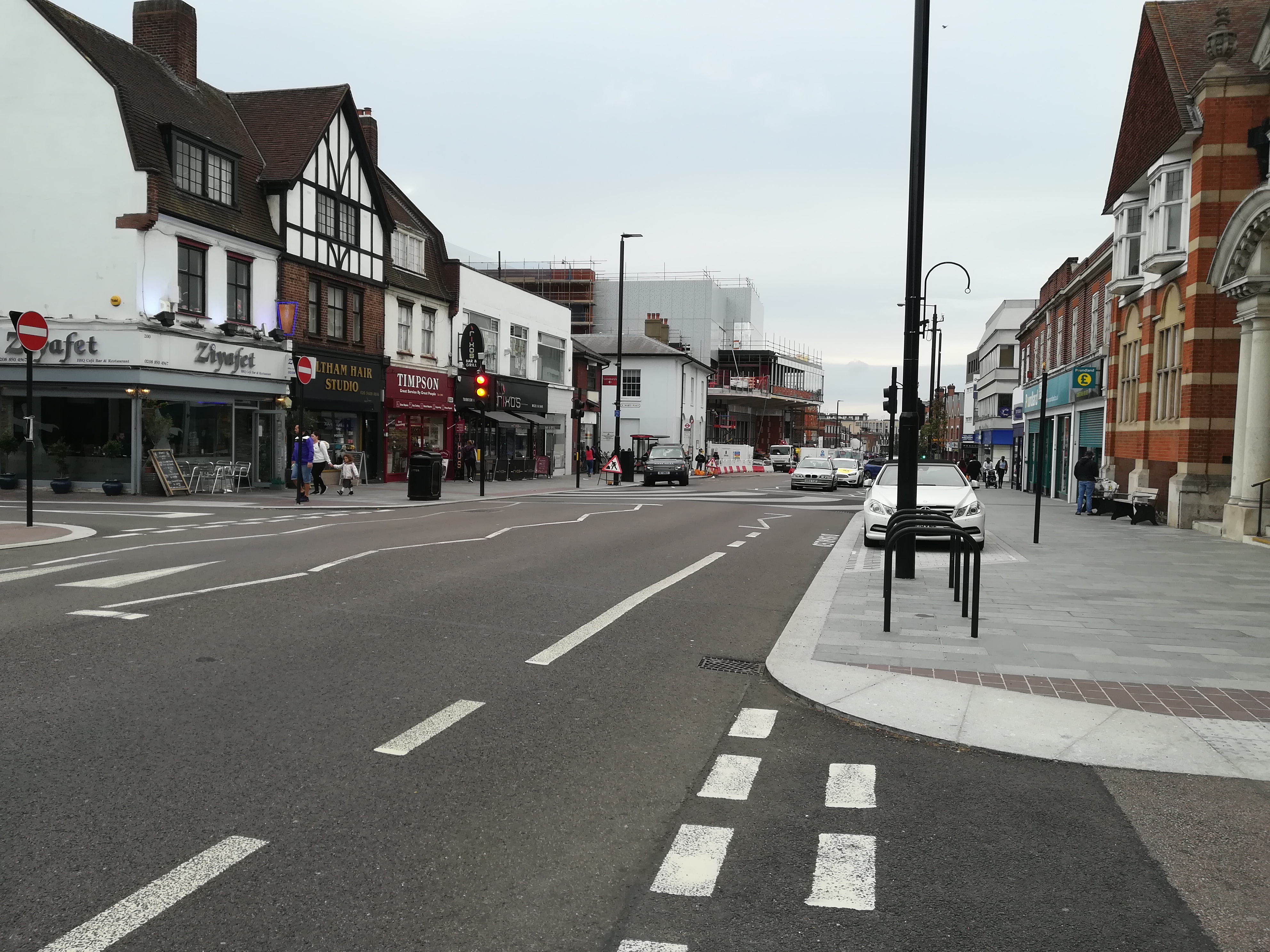
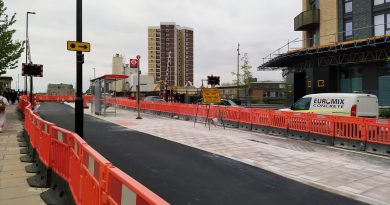
As you point out, Greenwich never managed to ensure that s.106 commitments were delivered – witness the unfinished appearance of so many developments – so getting CIL out of developers was always going to be a stretch. One thing that puzzles me is why Greenwich didn’t opt for a higher level of CIL for riverside developments as other boroughs have. It is a finite resource and Greenwich has the last relatively undeveloped area. They did manage to set a lower level of CIL for Thamesmead but that was the limit of their ambition. The words “piss-up” and “brewery ” are never far from my thoughts when I contemplate the muddle that passes for local government here.